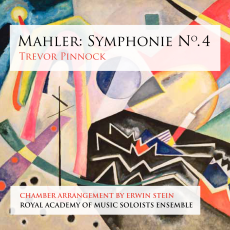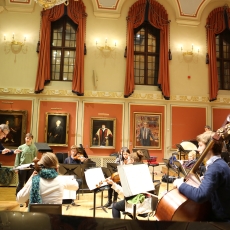Trevor Pinnock and RAM - Mahler - Sinfini Music
So you've got your Bernstein, Karajan and Rattle recordings of Mahler's Fourth. Why would you want to hear an arrangement for 14-piece chamber ensemble of that same symphony?
Personally, I find the idea of secret histories utterly irresistible, and what could be more intoxicating than the secret history of a shadowy, elite, turn-of-the-century Viennese underground music society headed up by Arnold Schoenberg? That's the milieu into which this mini-me arrangement, prepared by Schoenberg's star pupil Erwin Stein, was born, a world that considered Mahler more conductor than composer, an ambition-rich, cash-poor, subscriber-only concert series (which very sensibly barred critics from attending) that relished niche composers and found creative ways to hear their most important works.
Stein created an X-ray of Mahler's piece, the flesh scooped away so you can hear in rare close-up the inner moving parts; the bones, the connective tissue, the beating heart. And the point, I think, is not to listen and regret that the piano has been left to carry the weight of the third movement's climactic points-of-arrival, or that the Mozartian/Schubertian opening movement lacks the cushion of a full string section. Mahler concludes his symphony with a setting for soprano - here the totally loveable Sónia Grané - from his much-plundered volume of folk poems Das Knaben Wunderhorn; this poem is a child's view of heaven, and the folksy lilt of a thinned-out first movement stresses how deeply Mahler's end is rooted in his beginnings.
And there's a prologue: Trevor Pinnock and his intrepid Royal Academy of Music players begin with an arrangement overseen by Schoenberg of Debussy's Prélude à l'après-midi d'un faune, harmonium acting like a sampler filling out the missing parts, impressionistic whimsy before Mahler takes it to heaven.


